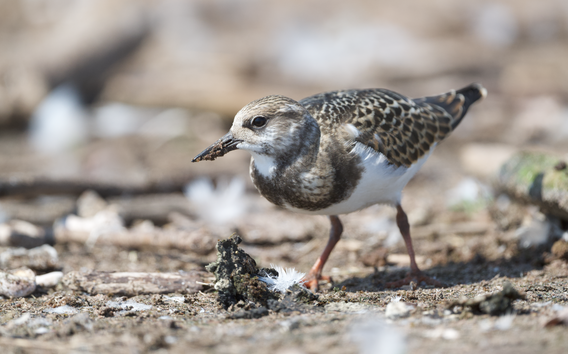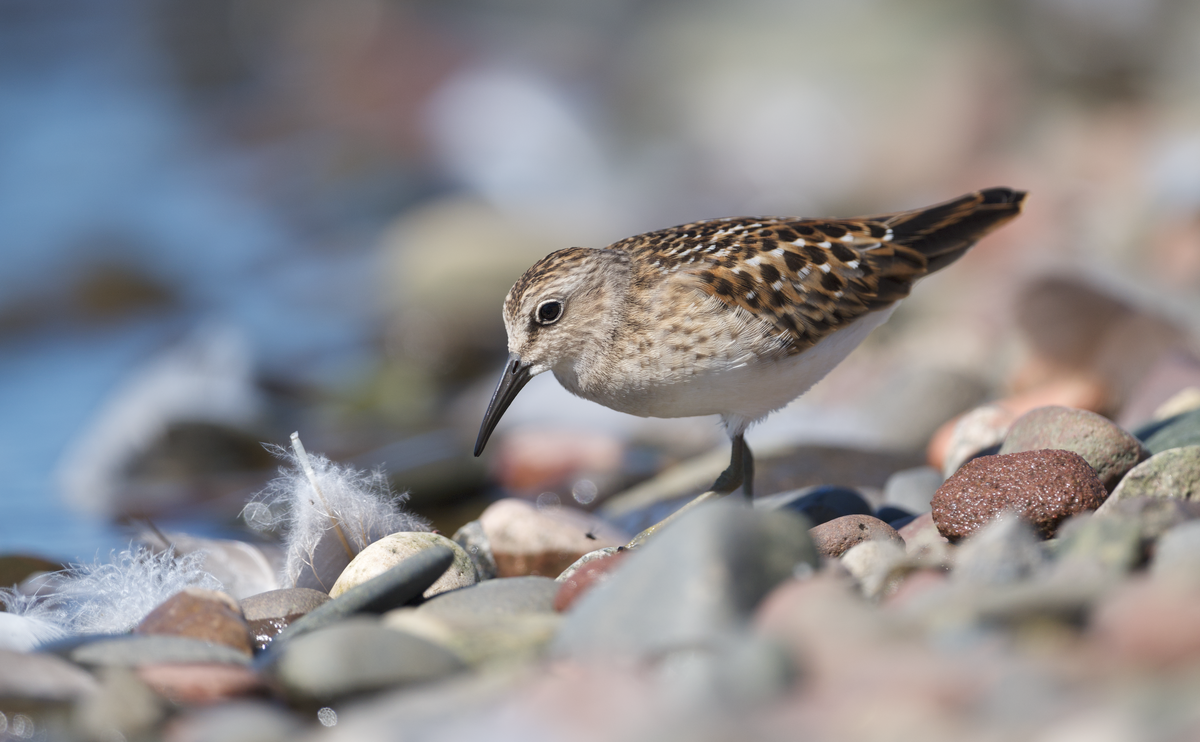Humans – and their dogs – love beaches. Running or strolling, picnicking or chasing a ball, the space where water meets land is valuable real estate.
But it’s also necessary for shorebirds, who make their living in that space while trying to avoid the people, pups and Frisbees.
“Flying around to move away from human activity burns a lot of calories,” explained NRRI Avian Ecologist Steve Kolbe. “And that’s not ideal when you’ve just flown in from the Arctic. You’d just want to chill out, forage and gain calories.”
And that’s what the researchers documented on Interstate Island, the scruffy piece of land built in the St. Louis River Estuary with shipping channel dredge material. During spring and fall migration, it’s a small sanctuary – a place to rest away from humans, their (illegally) off-leash dogs and other predators – that attracts many species of shorebirds.

Kolbe, with project leader Annie Bracey and fellow researcher Stephen Nelson, documented 25 shorebird species and 35 other migratory birds using Interstate Island over a four-year pre- and post-restoration study.
“Birds on Minnesota Point, where there are lots of people, are always flying around, head up, on alert,” said Kolbe. “But on Interstate Island we see them sleeping, heads tucked under their wing, sometimes for days. It’s a safe haven.”
Survey Says
The island is a designated Wildlife Management Area, jointly managed by the Minnesota and Wisconsin Departments of Natural Resources as critical habitat for the endangered Piping Plover and threatened Common Tern bird species, as well as a robust population of Ring-billed Gulls.

The research goal was to understand how birds responded to an island restoration effort. More dredge material was added in 2020 to shore-up the habitat that had been slowly eroding since 2015 as water levels started dramatically rising. The study monitored birds using trail cameras and in-person surveys.
The researchers were surprised by how immediately the shorebirds used the restored island, and by the wide diversity of species, even flocking to the island as loud cranes and machinery were making progress.
“In my mind, this points to a lack of this type of habitat for shorebirds, imperiled birds especially,” said Kolbe. “If we can make more of it, the birds will most certainly use it.”
The monitoring study was led by the Minnesota Land Trust and funded by Lessard Sams Outdoor Heritage Fund, the Great Lakes Fish and Wildlife Restoration Act, The Great Lakes Restoration Initiative, and the Minnesota Coastal Program.
Win-Win

The habitat designed for the Common Tern on the island has been well monitored by the DNRs and NRRI avian researchers, but far less was known about the stopover habits of other species. Now, better understanding of the benefits to many more species of birds elevates the importance of the island.
And it’s an excellent example of using dredge material in a way that benefits wildlife while also keeping the shipping channel open for commerce.
“We know that shipping is an important economic driver for our region,” Kolbe added. “Well, here’s one thing we can use dredge material for that will immediately have a positive impact on migrating shorebirds.”
He anticipates that each year, as the birds become familiar with this restored habitat, the “wisdom of the flock” will lead more birds there.
The NRRI report was submitted to the Minnesota Land Trust in December and can be read here: Interstate Island Habitat Restoration: Phase III – Long-Term Monitoring and Maintenance Plan Common Tern Monitoring & Migratory Shorebird Assessment 2023
PHOTO TOP: Least Sandpiper on Interstate Island (Credit: S. Kolbe)
